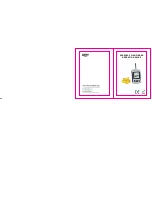
sensitivity level for conditions. Momentarily, you’ll see the reading start to “March” across the
screen from right to left.
Increase your boat speed to ensure that you get a continuous bottom reading as the boat
moves. Your LCR 120 and its sensor are designed to operate at up to 75 mph, so feel free to test
them at very high speeds.
If the LCR 120 performs well at idle or slow speeds, but the display is not continuous at
higher speeds, the sensor is not installed properly. Air bubbles or turbulence from the boat hull
are passing across the sensor face, blocking the transmitting signal. By following the instructions
in “Mounting the Sensor,” you can make simple adjustments that should fix the problem.
NOTE: If other problems occur, see “Troubleshooting” later in this manual for tips from the
Hummingbird engineers. If you don’t find the solution there, call out Customer Service Hotline.
Section 4: Using the LCR 120
This section provides complete information on operating the LCR 120 through its front
panel controls. You are encouraged to read this information completely as you first learn to use
the LCR 120; doing so will insure you make the most if its many features and functions.
The fist part of this section explains the use of the built-in simulator, which you can use to
practice selecting functions through the front panel. The remaining instructions, which can be
followed while using the simulator or in actual operation, explain each function and are organized
according to the front panel layout.
Using the Built-In Simulator
The LCR 120 includes a built-in simulator that helps you learn to use your new
equipment. The simulator displays a typical underwater scene, and lets you practice with the
controls.
























